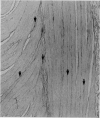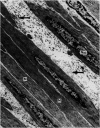Abstract
Diverticular disease of the sigmoid colon is an increasingly common clinical problem in the ageing population of western industrialised countries but the mechanism by which the disease develops remains unknown. The muscular abnormality is the most striking and consistent feature and this has been studied by light and electron microscopy in 25 surgical specimens of uncomplicated diverticular disease and in 25 controls. This is the first ultrastructural study of human colonic muscle to be published and shows that the muscle cells in diverticular disease are normal; neither hypertrophy nor hyperplasia is present. There is, however, an increase in the elastin content of the taeniae coli by greater than 200% compared with controls: elastin is laid down between the muscle cells and the normal fascicular pattern of the taeniae coli is distorted. There is no alteration in the elastin content of the circular muscle. As elastin is laid down in a contracted form, this elastosis may be responsible for the shortening or 'contracture' of the taeniae which in turn leads to the characteristic concertina-like corrugation of the circular muscle. Such a structural change could explain the altered behaviour of the colon wall in diverticular disease and its failure to change on treatment with bran.
Full text
PDF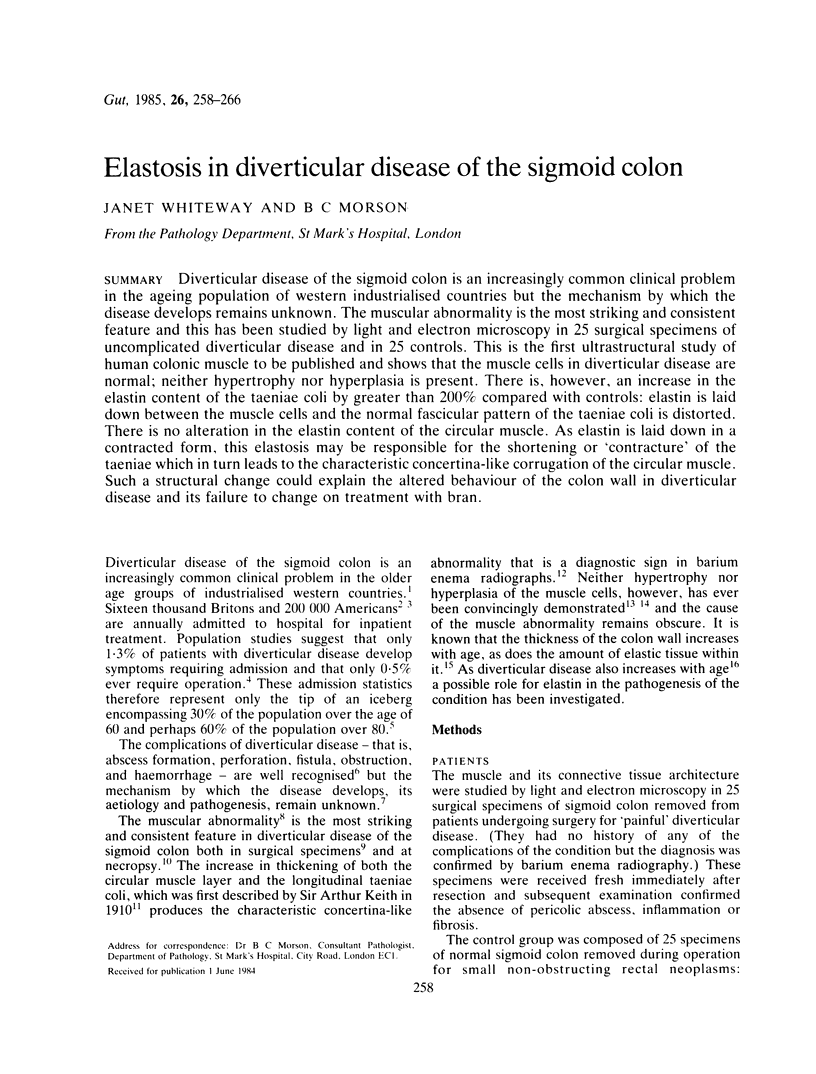

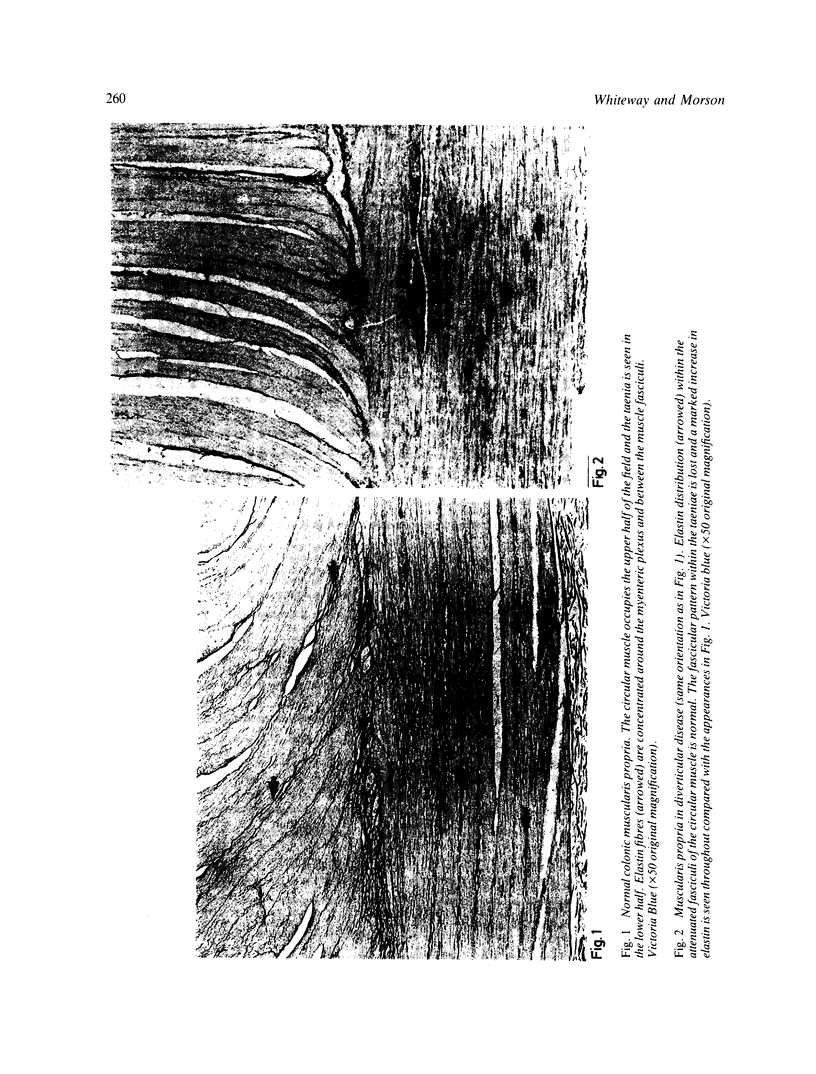

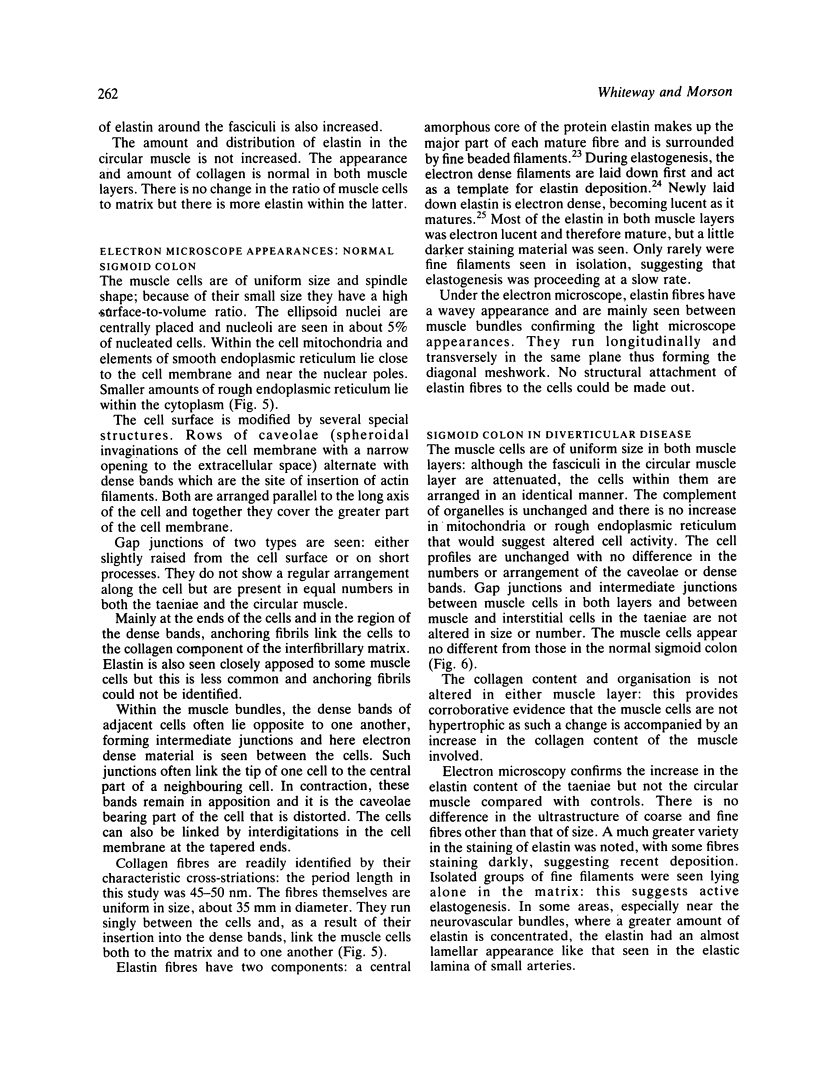
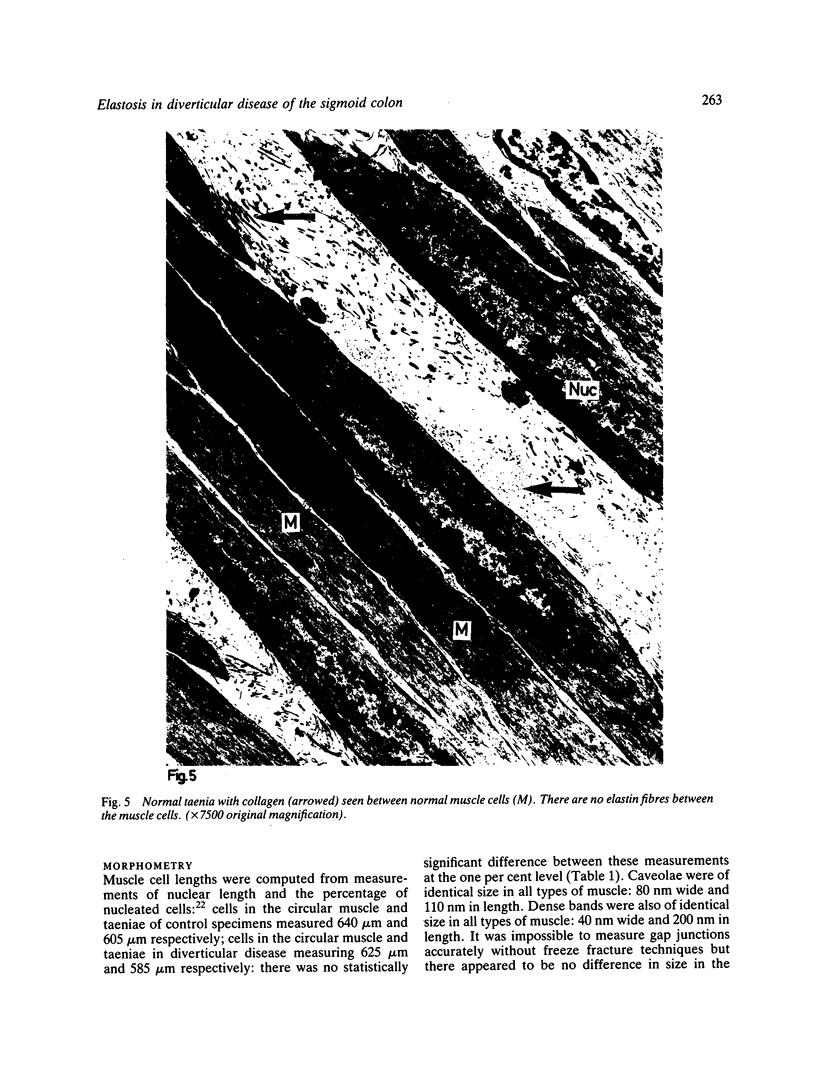
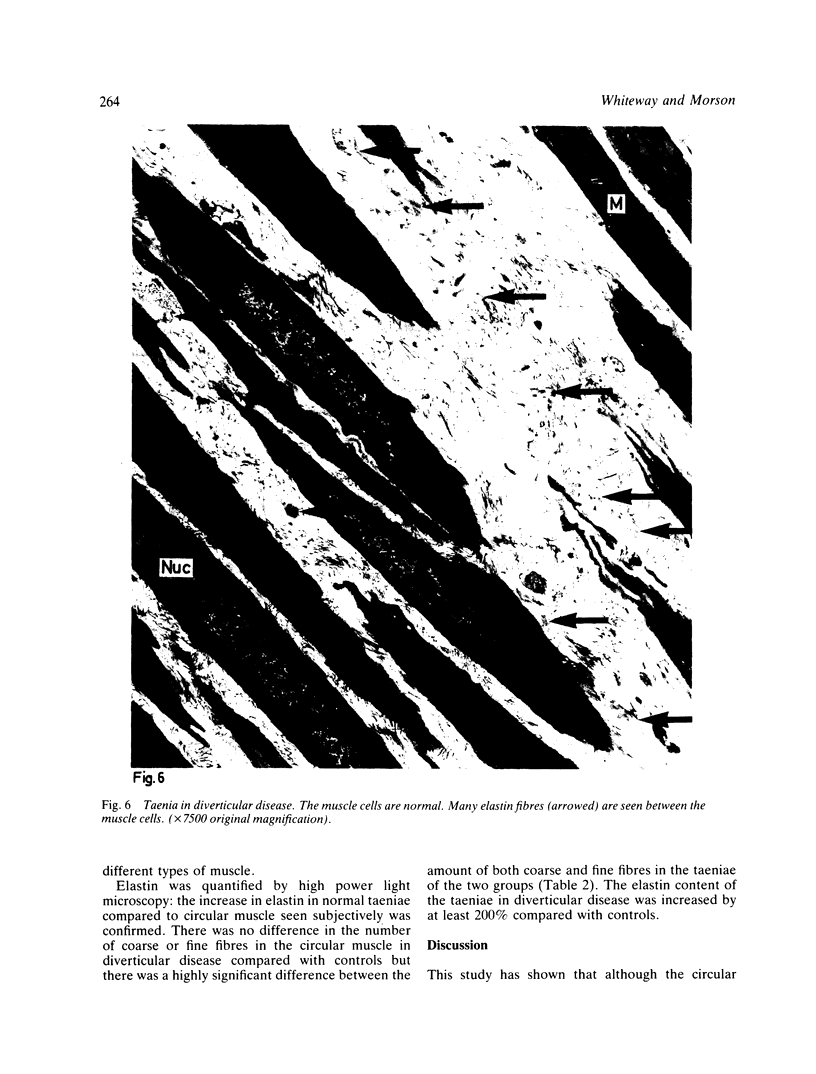
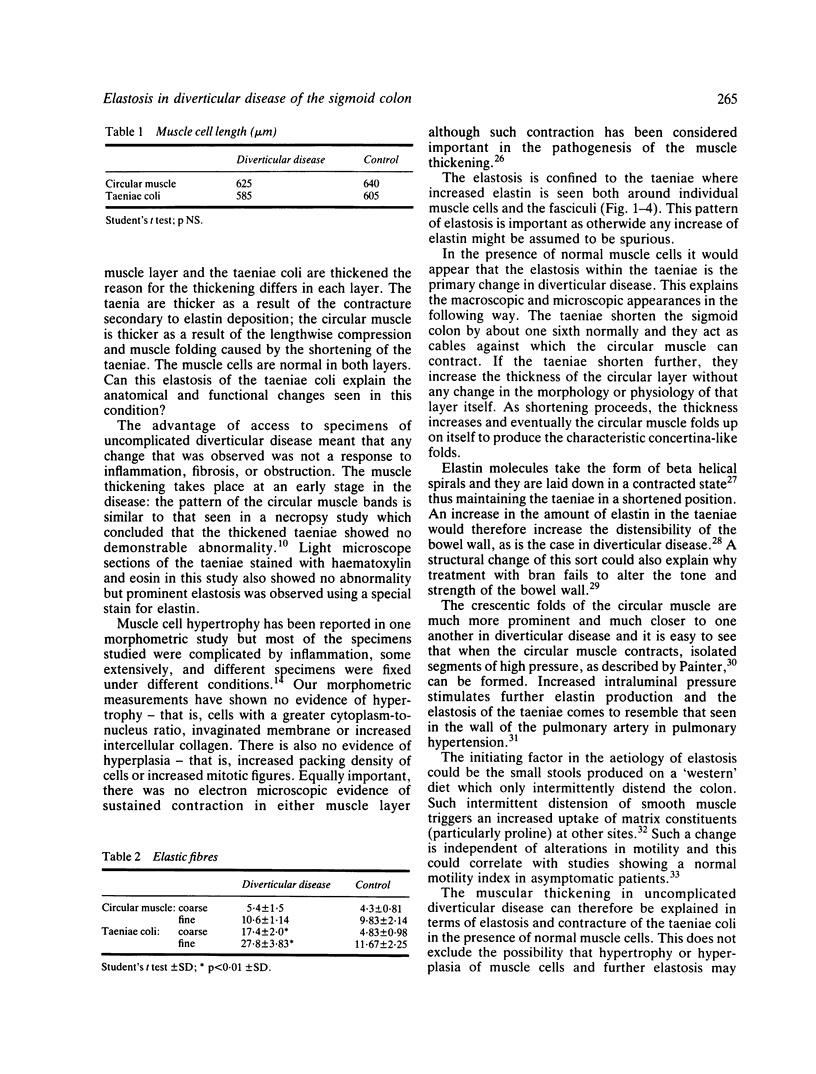
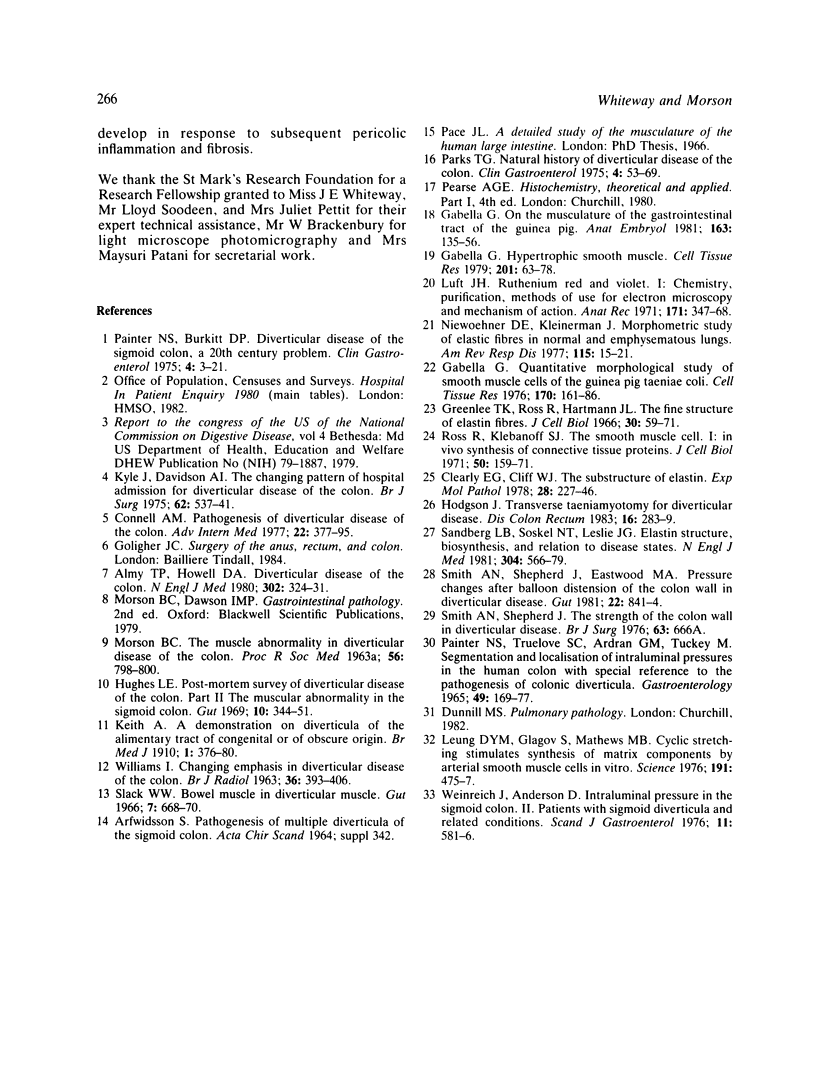
Images in this article
Selected References
These references are in PubMed. This may not be the complete list of references from this article.
- Almy T. P., Howell D. A. Medical progress. Diverticular disease of the colon. N Engl J Med. 1980 Feb 7;302(6):324–331. doi: 10.1056/NEJM198002073020605. [DOI] [PubMed] [Google Scholar]
- Cleary E. G., Cliff W. J. The substructure of elastin. Exp Mol Pathol. 1978 Apr;28(2):227–246. doi: 10.1016/0014-4800(78)90054-0. [DOI] [PubMed] [Google Scholar]
- Connell A. M. Pathogenesis of diverticular disease of the colon. Adv Intern Med. 1977;22:377–395. [PubMed] [Google Scholar]
- Gabella G. Hypertrophic smooth muscle. I. Size and shape of cells, occurrence of mitoses. Cell Tissue Res. 1979 Sep 2;201(1):63–78. doi: 10.1007/BF00238048. [DOI] [PubMed] [Google Scholar]
- Gabella G. Quantitative morphological study of smooth muscle cells of the guinea-pig taenia coli. Cell Tissue Res. 1976 Jul 26;170(2):161–186. doi: 10.1007/BF00224297. [DOI] [PubMed] [Google Scholar]
- Greenlee T. K., Jr, Ross R., Hartman J. L. The fine structure of elastic fibers. J Cell Biol. 1966 Jul;30(1):59–71. doi: 10.1083/jcb.30.1.59. [DOI] [PMC free article] [PubMed] [Google Scholar]
- Hodgson J. Transverse taeniomyotomy for diverticular disease. Dis Colon Rectum. 1973 Jul-Aug;16(4):283–289. doi: 10.1007/BF02587702. [DOI] [PubMed] [Google Scholar]
- Hughes L. E. Postmortem survey of diverticular disease of the colon. II. The muscular abnormality of the sigmoid colon. Gut. 1969 May;10(5):344–351. doi: 10.1136/gut.10.5.344. [DOI] [PMC free article] [PubMed] [Google Scholar]
- Kyle J., Davidson A. I. The changing pattern of hospital admissions for divertical disease of the colon. Br J Surg. 1975 Jul;62(7):537–541. doi: 10.1002/bjs.1800620709. [DOI] [PubMed] [Google Scholar]
- Leung D. Y., Glagov S., Mathews M. B. Cyclic stretching stimulates synthesis of matrix components by arterial smooth muscle cells in vitro. Science. 1976 Feb 6;191(4226):475–477. doi: 10.1126/science.128820. [DOI] [PubMed] [Google Scholar]
- Luft J. H. Ruthenium red and violet. I. Chemistry, purification, methods of use for electron microscopy and mechanism of action. Anat Rec. 1971 Nov;171(3):347–368. doi: 10.1002/ar.1091710302. [DOI] [PubMed] [Google Scholar]
- MORSON B. C. THE MUSCLE ABNORMALITY IN DIVERTICULAR DISEASE OF THE COLON. Proc R Soc Med. 1963 Sep;56:798–800. [PMC free article] [PubMed] [Google Scholar]
- Niewoehner D. E., Kleinerman J. Morphometric study of elastic fibers in normal and emphysematous human lungs. Am Rev Respir Dis. 1977 Jan;115(1):15–21. doi: 10.1164/arrd.1977.115.1.15. [DOI] [PubMed] [Google Scholar]
- PAINTER N. S., TRUELOVE S. C., ARDRAN G. M., TUCKEY M. SEGMENTATION AND THE LOCALIZATION OF INTRALUMINAL PRESSURES IN THE HUMAN COLON, WITH SPECIAL REFERENCE TO THE PATHOGENESIS OF COLONIC DIVERTICULA. Gastroenterology. 1965 Aug;49:169–177. [PubMed] [Google Scholar]
- Painter N. S., Burkitt D. P. Diverticular disease of the colon, a 20th century problem. Clin Gastroenterol. 1975 Jan;4(1):3–21. [PubMed] [Google Scholar]
- Parks T. G. Natural history of diverticular disease of the colon. Clin Gastroenterol. 1975 Jan;4(1):53–69. [PubMed] [Google Scholar]
- Ross R., Klebanoff S. J. The smooth muscle cell. I. In vivo synthesis of connective tissue proteins. J Cell Biol. 1971 Jul;50(1):159–171. doi: 10.1083/jcb.50.1.159. [DOI] [PMC free article] [PubMed] [Google Scholar]
- Sandberg L. B., Soskel N. T., Leslie J. G. Elastin structure, biosynthesis, and relation to disease states. N Engl J Med. 1981 Mar 5;304(10):566–579. doi: 10.1056/NEJM198103053041004. [DOI] [PubMed] [Google Scholar]
- Slack W. W. Bowel muscle in diverticular disease. Gut. 1966 Dec;7(6):668–670. doi: 10.1136/gut.7.6.668. [DOI] [PMC free article] [PubMed] [Google Scholar]
- Smith A. N., Shepherd J., Eastwood M. A. Pressure changes after balloon distension of the colon wall in diverticular disease. Gut. 1981 Oct;22(10):841–844. doi: 10.1136/gut.22.10.841. [DOI] [PMC free article] [PubMed] [Google Scholar]
- Smith A. N., Shepherd J. Proceedings: The stength of the colon wall in diverticular disease. Br J Surg. 1976 Aug;63(8):666–666. [PubMed] [Google Scholar]
- WILLIAMS I. Changing emphasis in diverticular disease of the colon. Br J Radiol. 1963 Jun;36:393–406. doi: 10.1259/0007-1285-36-426-393. [DOI] [PubMed] [Google Scholar]
- Weinreich J., Andersen D. Intraluminal pressure in the sigmoid colon. II. Patients with sigmoid diverticula and related conditions. Scand J Gastroenterol. 1976;11(6):581–586. [PubMed] [Google Scholar]



